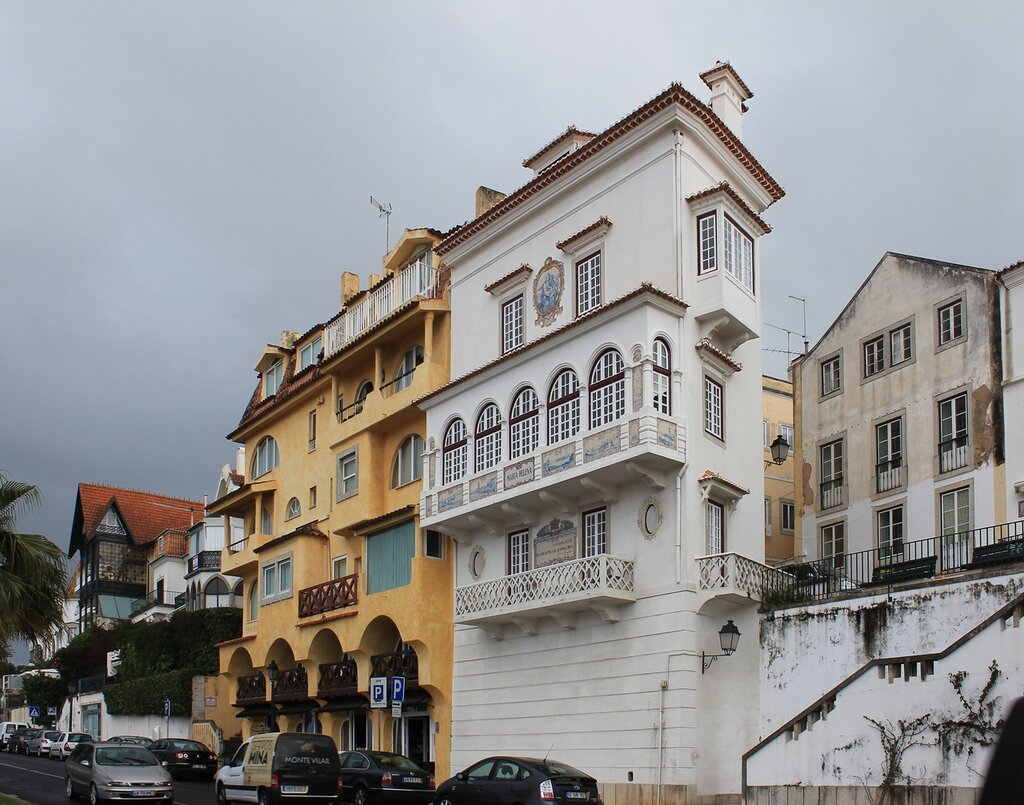Cascais, the first acquaintance
We entered the city from the direction of the devil's Mouth canyon, so the first attraction was the Santa Marta lighthouse. You can climb the tower of the lighthouse, as well as visit the Museum of its history. Here is also the Santa Maria mansion, also accessible to the public, but this time we passed it by.

We will start our short walk in Cascais at the great anchor of the age of the sailing fleet.
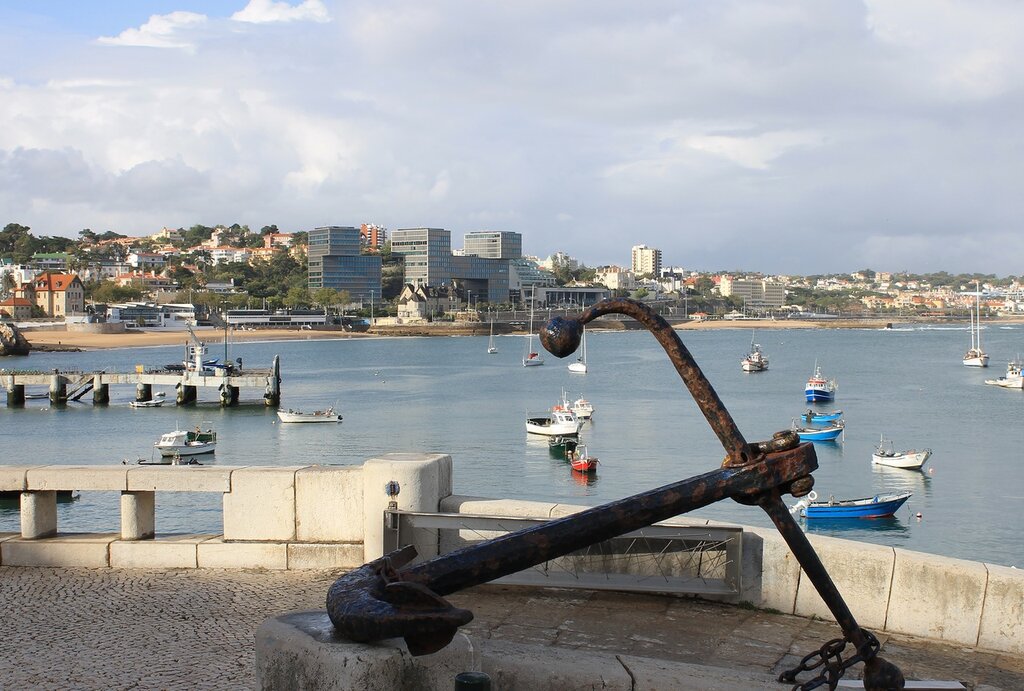
Along the coast goes Avenida Carlos I (Dom Carlos I), built up with luxury mansions of the late 19th century.
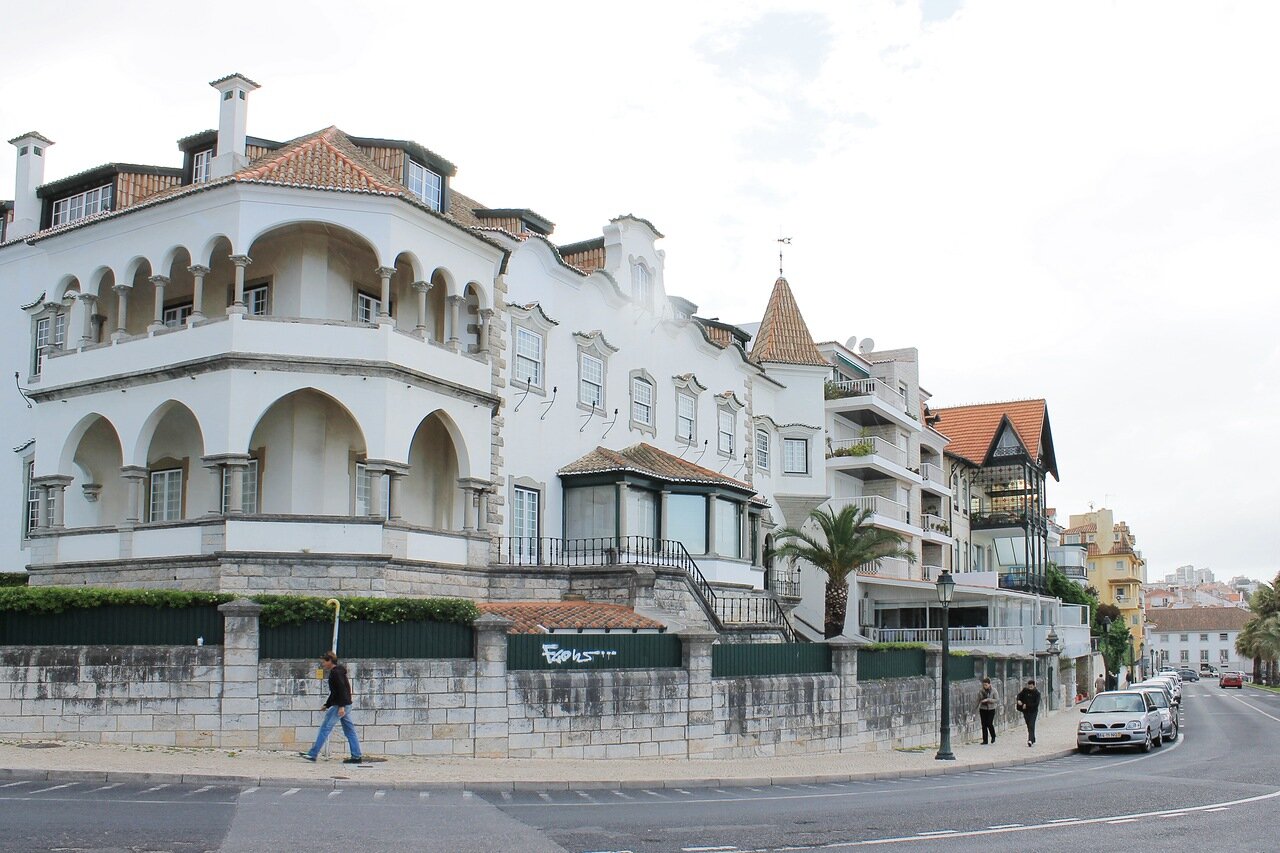
We will start our short walk in Cascais at the great anchor of the age of the sailing fleet.
The city originated in the 12th century as a fishing village, eventually becoming the main supplier of fish to Lisbon.

И сейчас в заливе Кашкайш можно видеть множество рыболовецких судов всех цветов и размеров.
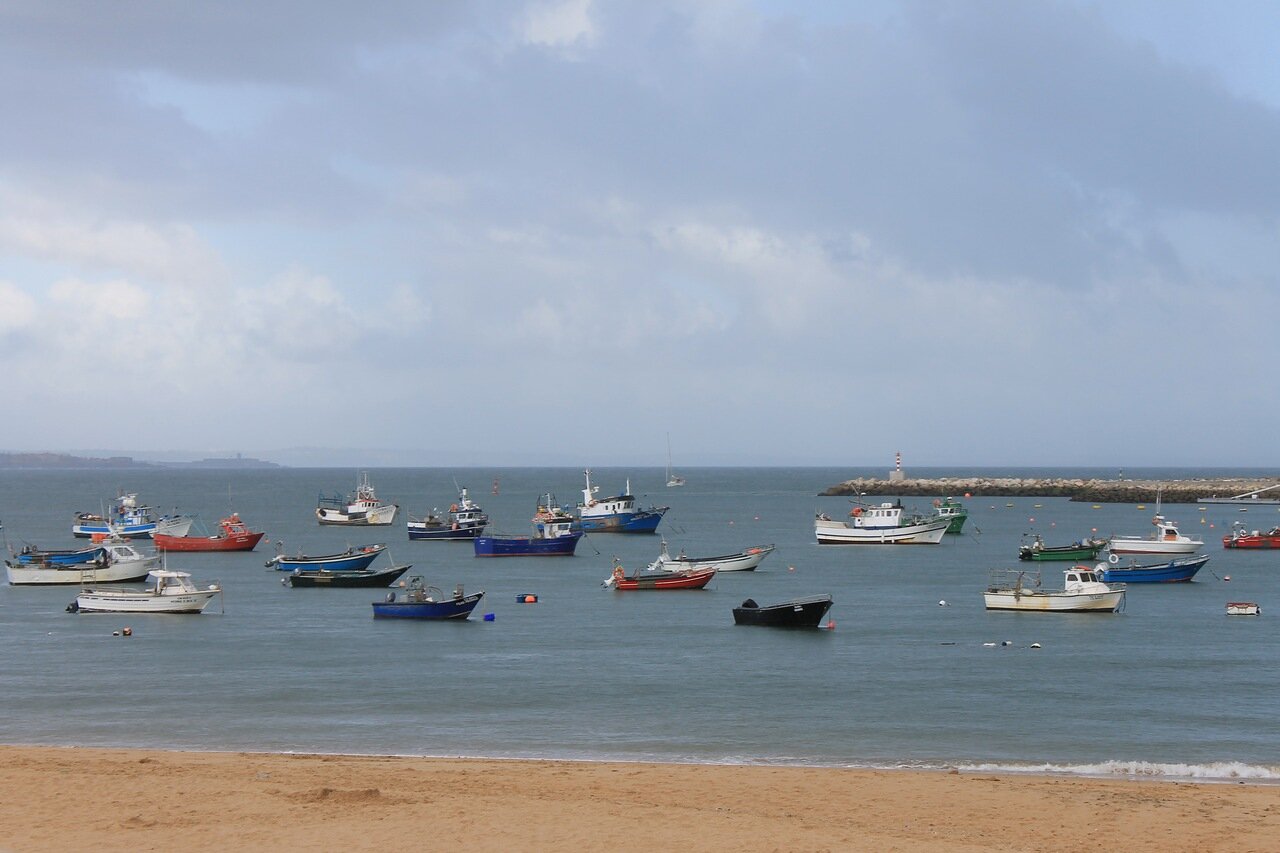

Now it is a resort town with a population of just over 30 thousand people.

Yacht club.

On the main square (on the map) there is a monument to king Pedro I (Pedro I). He ruled Portugal for only 10 years, starting in 1857. He lived a short life (47 years), no historical achievements are listed for him, he is remembered for his passion for women, hunting and feasting, while he was considered by the people as a just (Pedro I o "Justiceiro") ruler, whose era was a period of prosperity, without wars and other upheavals.

Hotel Baia 3*. I think it is popular - the city center and the beach are close by.

The town hall building is decorated with ceramic panels. Built in the 18th century, it was restored after the earthquake.

Right in the center, in front of the town square - Praia dos Pescadores - fish beach.
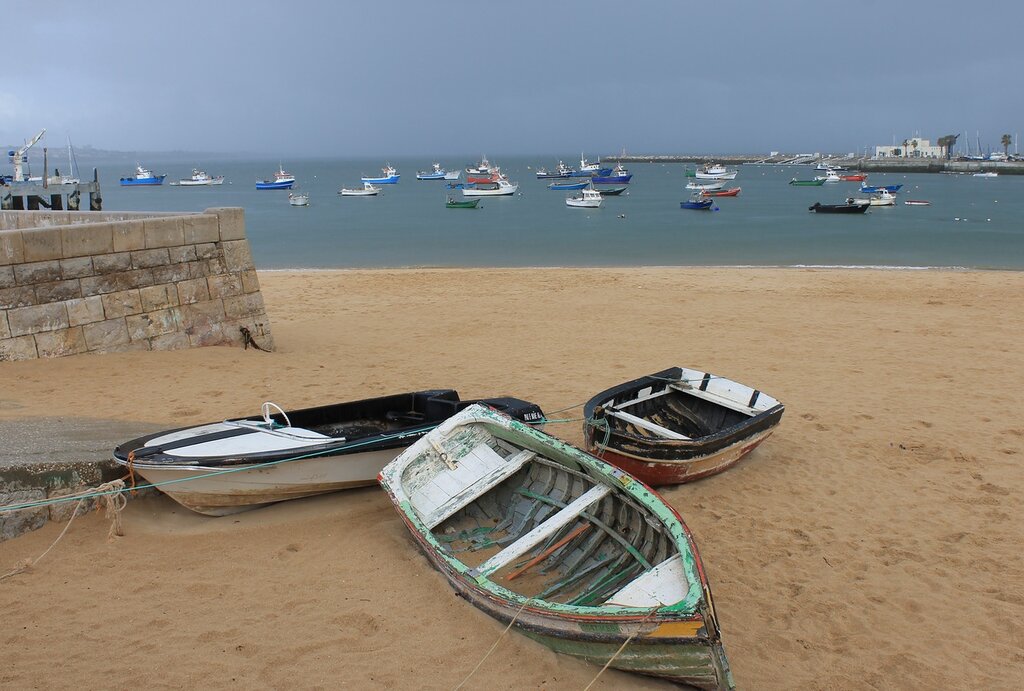
Near the five-star hotel "Villa Albatros" (Villa Albatroz 5*).

The sun had just been shining, but a cloud had come down from the Atlantic and it was raining. This is not uncommon in spring Portugal. But the greatest amount of precipitation falls in the winter months. The sunniest days are from June to September. The water warms up only by July, not rising above 18 degrees even on shoals due to tides carrying cold water from the ocean. In winter, the ocean gives its heat to the land, so it is almost never colder than +10.

In the right part of the beach-a monument in honor of the 500th anniversary of the era of Great Geographical Discoveries, established in 1992. It depicts a woman peering out into the ocean in some completely unimaginable pose. On the pedestal-a map with places where the foot of navigators first set foot on new lands.

The center has many interesting buildings Dating back to the 18th and early 20th centuries.
